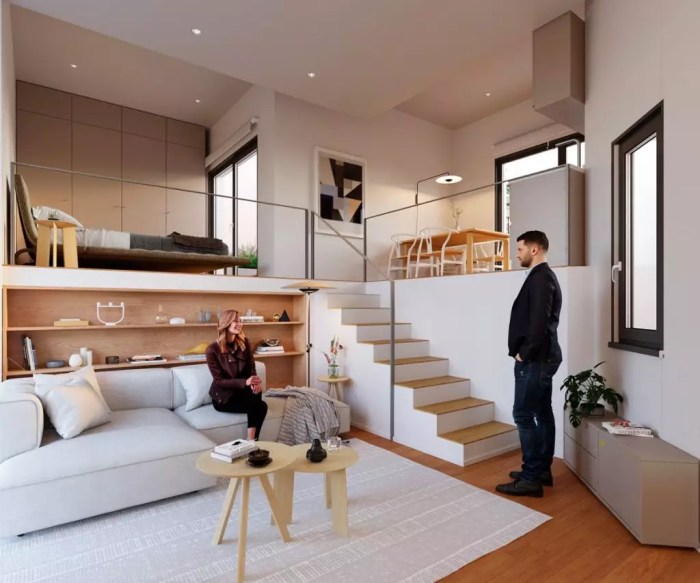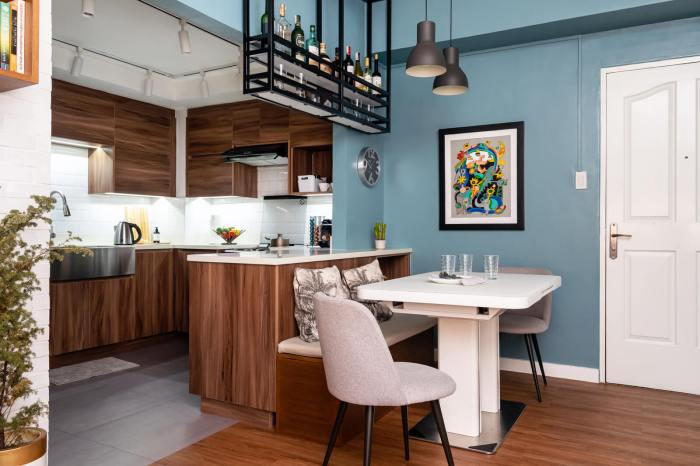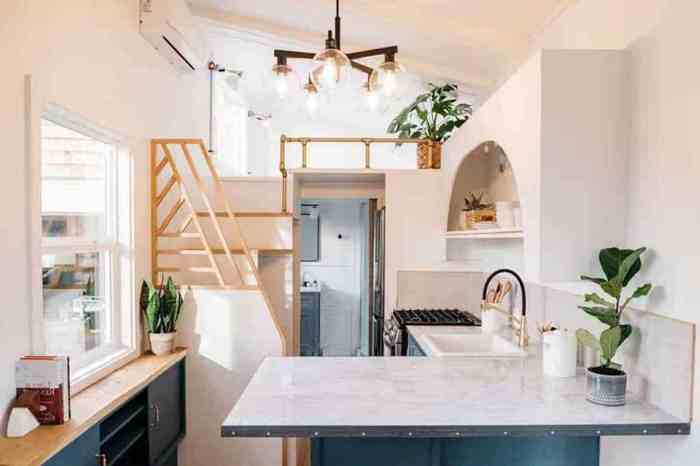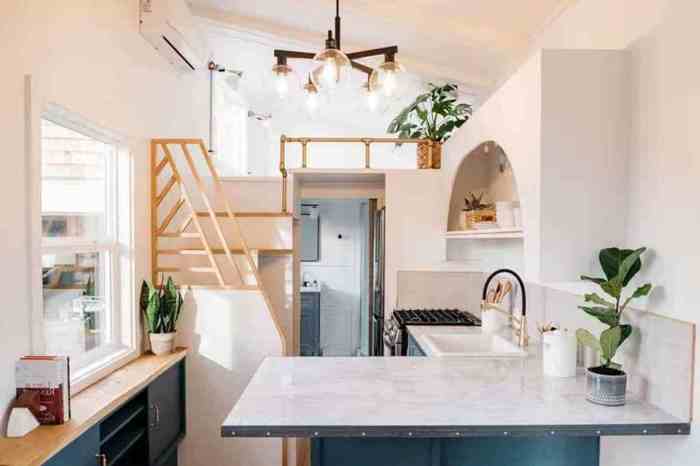Best interior design for small houses takes center stage, challenging us to transform cramped quarters into stylish and functional havens. The key lies in embracing clever space-saving techniques and prioritizing functionality without compromising aesthetics. By understanding the principles of small space design, we can create a home that feels both spacious and inviting, despite its limited square footage.
This guide delves into the art of maximizing natural light, selecting smart furniture, and incorporating color and pattern to create a sense of openness. We’ll explore practical storage solutions, emphasize the importance of creating a sense of flow, and highlight the power of a well-placed focal point.
Throughout this journey, we’ll emphasize incorporating personal style and maintaining a clean and tidy space, ensuring that your small house feels like a true reflection of your unique personality.
Maximizing Natural Light
Natural light is a vital element in small house interior design, contributing to a sense of spaciousness, warmth, and overall well-being. By strategically incorporating natural light, you can transform a small space into a bright and inviting haven.
Maximizing Natural Light
Maximizing natural light is essential for creating a welcoming and spacious atmosphere in a small house. Here are some tips:
- Use Light-Colored Paint:Light colors reflect light, making rooms appear larger and brighter. Opt for white, cream, or pastel shades for walls and ceilings.
- Strategically Place Windows:Position windows to maximize natural light penetration. Consider using large windows or skylights to allow ample sunlight to flood the space.
- Incorporate Mirrors:Mirrors reflect light, multiplying its effect and creating a sense of depth. Place mirrors strategically to bounce light around the room, especially in areas with limited natural light.
- Minimize Obstructions:Ensure that curtains, furniture, and other objects do not block natural light. Opt for sheer curtains or blinds that allow light to pass through.
Designing a Layout for Natural Light
Here’s a sample layout for a small house that prioritizes natural light:
Living Room:
- Position the sofa near a large window to maximize natural light exposure.
- Use a light-colored rug to reflect light and create a sense of spaciousness.
- Place a mirror opposite the window to bounce light back into the room.
Kitchen:
- Install windows above the sink to allow natural light to illuminate the workspace.
- Consider a light-colored backsplash to reflect light and brighten the space.
- Use a light-colored countertop material to enhance the brightness.
Bedroom:
- Place the bed near a window to enjoy natural light in the morning.
- Use light-colored bedding and curtains to enhance the brightness.
- Incorporate a mirror on the wall opposite the window to reflect light and create a sense of spaciousness.
Smart Furniture Selection

In a small house, every piece of furniture counts. Choosing furniture that is both functional and stylish is crucial for maximizing space and creating a comfortable living environment. Furniture selection for small spaces requires careful consideration of its dual purpose: maximizing functionality while maintaining aesthetic appeal.
Multi-functional Furniture
Multi-functional furniture serves multiple purposes, maximizing space utilization. This approach eliminates the need for separate pieces, optimizing the layout of a small house.
- Sofa Beds:These versatile pieces transform from a comfortable sofa into a bed, perfect for hosting guests or creating a multi-purpose living room. A sofa bed offers a convenient solution for a small living room or guest room.
- Storage Ottomans:These ottomans provide seating while doubling as storage compartments. They can be used to store blankets, pillows, or other items, keeping the space tidy and organized.
- Coffee Tables with Drawers:These tables provide a surface for drinks and snacks while offering storage space for books, magazines, or remotes. This eliminates the need for additional storage units, saving valuable floor space.
Compact Sofas
Compact sofas are designed to fit into small spaces while still providing comfortable seating. These sofas are ideal for smaller living rooms or apartments, maximizing seating without overwhelming the room.
- Loveseats:These smaller sofas are perfect for intimate spaces, providing seating for two people. They are ideal for smaller living rooms or apartments, offering a cozy and comfortable seating option.
- Modular Sofas:These sofas consist of individual pieces that can be arranged in different configurations, allowing for flexibility in a small space. They can be easily reconfigured to accommodate different needs or layouts.
Storage Beds
Storage beds offer hidden storage compartments underneath the mattress, maximizing space utilization in bedrooms. This is particularly useful in small bedrooms where closet space may be limited.
- Platform Beds with Drawers:These beds feature built-in drawers underneath the mattress, providing ample storage for clothing, bedding, or other items.
- Beds with Under-bed Storage:These beds have a raised platform that creates space for storage containers or bins underneath. This allows for efficient storage without sacrificing valuable floor space.
Color and Pattern
Color and pattern are powerful tools in interior design, especially when dealing with small spaces. They can create the illusion of more space, add personality, and enhance the overall ambiance of your home.
Choosing a Color Palette, Best interior design for small house
A well-chosen color palette can make a small house feel larger and more inviting.
- Light and Neutral Colors:Light colors like white, cream, beige, and pale gray reflect more light, making rooms appear brighter and more spacious. These colors also create a sense of calm and serenity.
- Use Color Accents:While light neutrals are ideal for walls and larger surfaces, incorporating pops of color through furniture, accessories, or artwork can add visual interest and personality without overwhelming the space.
- Consider the Room’s Function:The color palette should complement the room’s purpose. For example, a calming blue or green might be suitable for a bedroom, while a bright yellow or orange could energize a kitchen or dining area.
Choosing Patterns
Patterns can add visual interest and personality to a small house.
- Small-Scale Patterns:Opt for small-scale patterns like stripes, dots, or floral prints. These patterns can create a sense of movement and interest without overwhelming the space.
- Limit Pattern Usage:While patterns can add visual interest, avoid using too many different patterns in one room. Stick to one or two dominant patterns and use them strategically to create visual focal points.
- Consider the Room’s Function:Patterns should also complement the room’s function. For example, a busy geometric pattern might be suitable for a living room, while a delicate floral pattern might be more appropriate for a bedroom.
Successful Color and Pattern Combinations
Here are some successful color and pattern combinations for different rooms in a small house:
- Living Room:A light gray wall with white trim paired with a navy blue sofa and patterned throw pillows. The navy blue adds a touch of sophistication, while the patterned pillows introduce visual interest.
- Bedroom:A pale green wall with white bedding and a patterned rug. The pale green creates a calming atmosphere, while the patterned rug adds a touch of personality.
- Kitchen:A white kitchen with black countertops and a patterned backsplash. The white cabinets and countertops create a sense of spaciousness, while the patterned backsplash adds visual interest and personality.
Creating a Sense of Flow

In a small house, every inch counts, and creating a sense of flow is crucial for maximizing space and making it feel larger than it is. A well-designed flow allows you to move easily through the house, visually connecting different areas, and creating a feeling of openness and harmony.
Furniture Arrangement
The placement of furniture plays a significant role in creating a sense of flow. By arranging furniture in a way that encourages movement and allows for easy access to different areas, you can enhance the flow of the house.
- Use Open Floor Plans:Open floor plans are a popular choice for small houses as they create a sense of spaciousness and flow. By removing walls between rooms, you can create a continuous flow of space, making the house feel larger.
Optimizing space is key in small house interior design. A smart approach is to utilize multi-functional furniture and maximize vertical space. For those with a one-bedroom dwelling, the 1 bedroom house interior design article offers valuable tips on creating a cohesive and functional living space.
By incorporating these strategies, even the smallest of homes can be transformed into a stylish and comfortable haven.
This is especially effective in smaller homes where space is limited.
- Create Natural Pathways:When arranging furniture, ensure there are clear pathways for movement throughout the house. Avoid placing furniture in the middle of rooms or blocking doorways, as this can create a sense of congestion and hinder the flow.
- Use Furniture to Define Areas:While open floor plans can be beneficial, it’s important to define different areas within the house. This can be achieved by using furniture to create distinct zones. For example, a sofa and coffee table can define a living area, while a dining table and chairs can create a separate dining space.
Color and Pattern
Color and pattern can also be used to create a sense of flow. By using a cohesive color scheme and consistent patterns throughout the house, you can visually connect different areas and create a sense of unity.
- Use a Consistent Color Palette:Choose a color palette that you like and use it throughout the house. This doesn’t mean every room needs to be the same color, but there should be a sense of continuity. You can use different shades of the same color or complementary colors to create a cohesive look.
- Incorporate Patterns:Patterns can be used to add interest and create a sense of flow. Use similar patterns in different rooms or use a larger pattern in one room and a smaller pattern in another. Be sure to choose patterns that complement the overall color scheme and the style of the house.
- Use Color to Guide the Eye:You can use color to guide the eye and create a sense of movement. For example, you can use a light color on the walls and a darker color on the furniture to create a sense of depth and draw the eye to specific areas.
Maximizing space in a small house requires clever design choices. From using light colors to create an illusion of spaciousness to incorporating multi-functional furniture, there are many tricks to make your small home feel bigger. For inspiration, check out beautiful house interior design images to see how professionals transform small spaces into inviting and stylish homes.
Remember, even a small house can be a haven with the right design elements.
Lighting
Lighting plays a crucial role in creating a sense of flow. By using a combination of natural and artificial light, you can enhance the flow of the house and make it feel more spacious.
- Maximize Natural Light:Natural light is essential for creating a sense of openness and flow. Maximize natural light by using large windows and skylights.
- Use a Variety of Light Sources:Use a combination of ambient, task, and accent lighting to create a balanced and inviting atmosphere. Ambient lighting provides general illumination, while task lighting provides focused light for specific activities, and accent lighting highlights specific features.
- Create Visual Connections:Lighting can be used to create visual connections between different areas of the house. For example, you can use a pendant light over a dining table to draw the eye from the living area to the dining area.
Floor Plan Example
Here is a basic floor plan example of a small house that promotes a sense of flow:
[Insert image of a floor plan here. This should be a basic floor plan of a small house, showing the living room, kitchen, bedroom, and bathroom. The living room should be open to the kitchen, with a clear pathway from the front door to the back of the house. The bedroom should be located at the back of the house, with a clear pathway from the living room to the bedroom. The bathroom should be located near the bedroom, with a clear pathway from the living room to the bathroom.]
This floor plan promotes a sense of flow by creating a continuous pathway from the front door to the back of the house. The open floor plan between the living room and kitchen creates a sense of spaciousness and allows for easy movement between these two areas.
The bedroom is located at the back of the house, providing privacy and a sense of separation from the living areas. The bathroom is located near the bedroom, creating a convenient and functional layout.
Final Review: Best Interior Design For Small House

Transforming a small house into a stylish and functional home is a rewarding endeavor. By embracing the principles Artikeld in this guide, you can unlock the full potential of your space, creating a haven that is both beautiful and practical.
Remember, it’s about maximizing every inch, celebrating natural light, and infusing your personal style into every corner. With a little creativity and ingenuity, you can turn a small house into a home that feels anything but small.
FAQ Summary
What are some common challenges of designing a small house?
Small houses often present challenges such as limited space, lack of storage, and the need to create a sense of openness. However, these challenges can be overcome with clever design solutions.
How can I make my small house feel bigger?
You can make your small house feel bigger by maximizing natural light, using light colors, incorporating mirrors, and choosing furniture that is both functional and space-saving.
What are some essential storage solutions for small houses?
Essential storage solutions for small houses include vertical storage, built-in shelves, under-bed storage, and multi-functional furniture.

